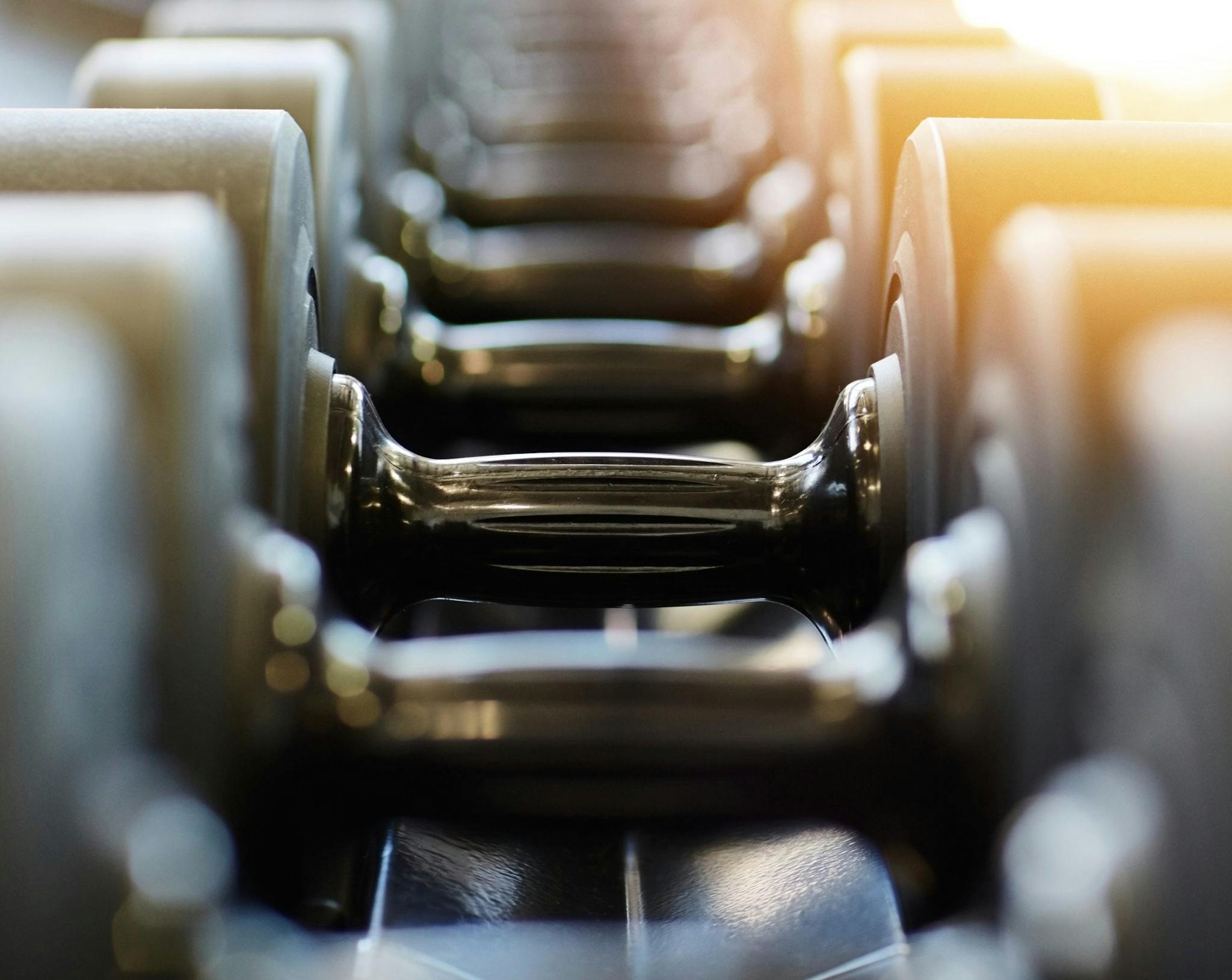
2024-11-11T15:27:56
Compounded Weight Loss Drugs: What to Know
- Family Medicine
- Weight Management
March 5, 2016 | Weight Management • Wellness Institute

Do you find yourself getting injured when you work out? Or are you exercising regularly and not seeing results? Are you thinking about quitting out of boredom? Don’t throw in the towel, it may be time to evaluate the way you are exercising, not the exercise itself. Many people—especially those just starting a workout program—make mistakes that keep them from getting the most out of their workout.
Let’s talk about some of the problems that people experience when working out:
Whether it’s due to fatigue or intensity, many people slouch/lean over on cardio machines such as the Stairmaster, elliptical, or treadmill. Your spine doesn’t have enough support when your back is rounded, so try to keep your spine erect when using the cardio machines.
Gripping the handles too tightly on the cardio machines allows you to “cheat” and contributes to slouching. It also prevents you from moving your arms – moving your arms boosts your heart rate and burns more calories.
The intensity of your workout may be compromised because your focus is elsewhere. If you have to read, stop about every 2-4 minutes and do a 3-4 minute high-intensity interval. During this interval, boost the difficulty level each minute and focus on form and breathing. After the 3-4 minute high-intensity interval, lower the difficulty level to catch your breath and repeat.
It’s a common idea that people think they only need to do cardio for exercise to keep fit. Sure, you build endurance and keep your heart healthy by doing cardio, but strength training increases your metabolism and burns more calories when your body is at rest. As we age, we lose muscle every decade (mostly due to inactivity) which increases our risk for falls, but strength training helps reverse that by keeping muscles active and supportive.
Carrying weights while walking may seem like a good way to mix cardio and strength training, but it can hurt your stride by adding stress to the quads, shins, and ankles. If you are using a treadmill for walking, do circuit training instead. For example, do 5 minutes of strength training, then use the treadmill for 5 minutes (no weights), and repeat.
Lifting weights too fast can put you at risk for joint injury or high blood pressure, and can compromise results. When using machines or free-weights, exhale as you lift (hardest part) for 2 counts, hold for 1 count, then inhale as you return to start for 3-4 counts (easiest part).
Avoid injury and ensure results by making sure you adjust the machines to your specific size and height before use and don’t strain yourself by trying to lift more than you should. Listed below are some common risky techniques people use when they strength train, and a better alternative to them:
Lat Pull-down Behind the Head – This should only be done by people who have very mobile shoulder joints, and can keep their spines straight when doing this move. So for everyone else, doing this wrong can impinge your shoulder, tear the rotator cuff, and injure the cervical vertebrae if the bar hits the back of the neck.
Safer Alternative – lean back slightly, use a wider–than–shoulder grip, and bring the bar down in front of your body to the top of your chest; you should feel your shoulder blades pulling down and coming together. Stabilize your body by contracting your abs, and resist using momentum to swing the bar up and down.
Upright Row – This move is where you lift free-weights/barbell/weighted cabled bar up under your chin, which can compress the nerves in the shoulder area, and may impinge the shoulder.
Safer Alternative – Work your shoulders with a front or lateral shoulder raise instead of an upright row. This is done by lifting weights out to the front or side of the body. Keep your arms straight, but make sure there’s a slight bend in your arms.
Smith Machine Squats – The bar doesn’t give on this machine and can force your body into vulnerable positions. People also have a tendency of positioning their feet farther in front of them, further increasing risk for injury. Using this machine for squats forces your body to move unnaturally, lose balance, and put excessive force on your knees, hamstrings, and lower back.
Safer Alternative – Use your body weight to do a regular squat—no machine involved. If you add weights to intensify the squat, make sure you keep proper form. Stand straight with your feet shoulder-width apart, and slowly lower your body as if to sit in a chair, keeping your back straight. Your weight should be maintained directly over your heels and your knee shouldn’t extend past your toes. When your knee reaches about a 90-degree bend, and slowly return to standing.
As we age, our tendons and ligaments lose fluid and elasticity, which leads to muscle tightness and inflexibility, so it’s important to stretch. Remember, it’s best to stretch at end of your workout; stretching cold muscles may put you at risk for pulling/tearing muscles. You can also take time to do stretch training separate from cardio and strength training, such as pilates or yoga.
Avoid bouncing during stretching; you put yourself at risk for straining or pulling your muscles if you do. Make sure your stretches are static: no movement at the joints, feeling the muscle lengthen but not to the point of pain.
If you sigh at the thought of working out or find yourself dragging your feet, you need to switch up your routine. Remember to incorporate activities you enjoy to keep things interesting and challenging so exercise won’t feel like a chore. Get your family and friends involved by taking a hike, playing competitive sports, or even just walking around the park.
Doing the same workout routine every day prevents you from reaping the benefits of exercise. By working the same muscles at the same intensity day in and day out, your body gets used to the routine… it becomes easy. Muscles aren’t challenged, your workouts become less efficient, and you burn fewer calories. Try new exercises/routines to keep your muscles confused and burning more fat.
Though it’s not realistic, some people expect big results by doing a little exercise. The minimum amount of physical activity recommended to prevent weight gain is 3 1/2 – 4 hours a week, or about 45 minutes, 5 days out of the week. Remember that 1 pound of fat equals 3,500 calories. So in order to lose 1 pound a week, you would need to burn 500 calories every day of the week with diet and exercise.
By working out at intense levels only 2 days out of the week, it puts you at risk for injury and burnout, plus you won’t be able to reach your goals. Not to mention you’ll be exhausted on Mondays. Keep exercise part of your weekday life, and save the weekends for special things you may not have time for during the week, such as hiking, or a long bike ride.
When beginners start working out, many try to do too much too fast, which puts them at risk for injuries, intense soreness, and burnout. If you are unsure how much you should be doing, ask your Doctor. Also, consult with a certified trainer who can show you proper techniques and help create a fitness program specified to your needs.
As tempting as it is to save time by skipping a warmup, it’s important to do it. Warming up readies your nervous system for a workout, helps prevent skipped heartbeats and helps you not get tired too quickly. Warm-up with light exercising for 5-10 minutes, such as marching in place or walking lunges. Breaking a light sweat is a good sign that you’re warmed up enough.
Please don’t just stop when you’ve reached the end of your workout. Let your heart rate gradually come down by exercising for 5-10 minutes at slower paces. Cooling down helps decrease the amount of lactic acid in your system, so you deal with less soreness.
If you’re thirsty, that’s a sign you’re already dehydrated. Make sure you drink water before, during, and after your workout. Fluid is needed to help muscles contract, so skimping on water may lead to spasms or aches. Sports drinks are really only needed if you are a high-intensity athlete in order to replace electrolytes and potassium.
Wearing improper shoes—like old shoes, or the wrong type or size—can undermine your workout efforts, even if you are doing everything else right. Wearing the wrong shoes increases pounding on your joints and can lead to injuries such as tendonitis or plantar fasciitis. Be sure to choose a shoe that is right for your activity, and meets your foot’s specifications (size, width, support, cushion, etc.). Shopping at stores that specialize in athletic shoes is the best place to find well-made shoes, find the right type, and get advice. Make sure to replace your shoes when they start to show signs of wear!
http://www.huffingtonpost.com/2014/12/23/beginner-exercise-mistake_n_6334618.html
http://www.webmd.com/fitness-exercise/top-20-fitness-mistakes-beginners-make?page=3
http://www.webmd.com/fitness-exercise/ss/slideshow-9-least-effective-exercises

WRITTEN BY:
The Live Better Team

2024-11-11T15:27:56

2024-03-22T08:45:28

2022-12-20T17:04:49

2022-03-17T17:03:51
This information is not intended to replace the advice of a medical professional. You should always consult your doctor before making decisions about your health.